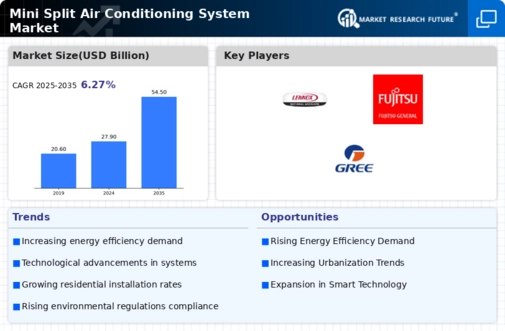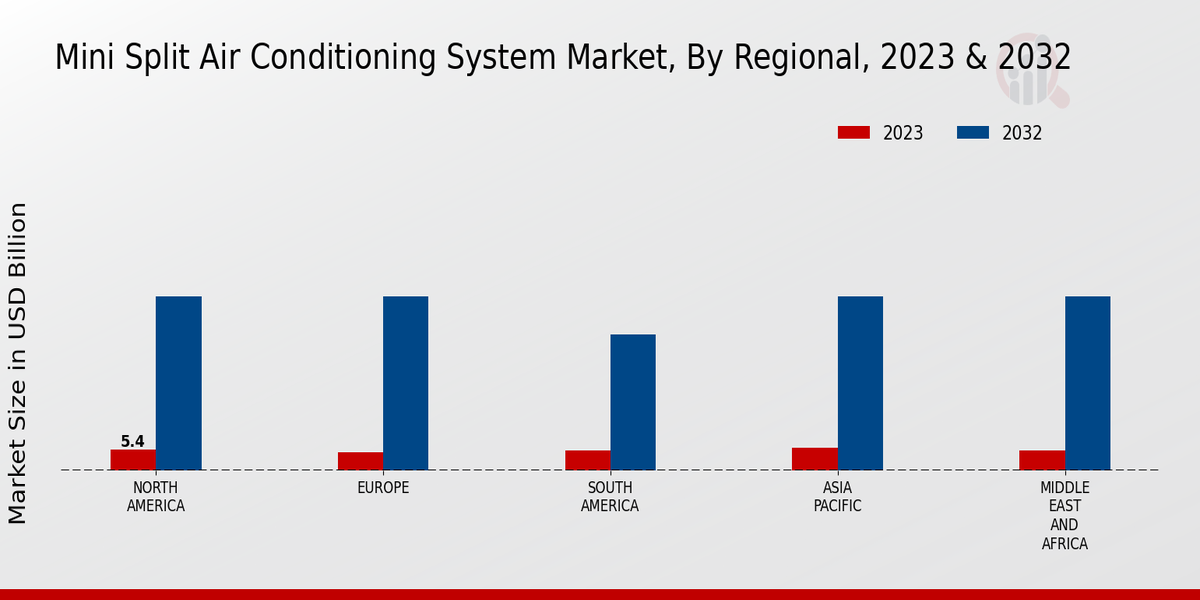Market Growth Projections
Government Regulations and Incentives
Government policies aimed at promoting energy efficiency significantly influence the Global Mini Split Air Conditioning System Market Industry. Many countries implement regulations that encourage the adoption of energy-efficient appliances, including mini split systems. Incentives such as tax rebates and subsidies further stimulate consumer interest in these technologies. As governments worldwide commit to reducing greenhouse gas emissions, the demand for compliant HVAC solutions is expected to increase. This regulatory environment creates a favorable landscape for the mini split market, aligning with global sustainability goals.
Growing Awareness of Indoor Air Quality
The increasing focus on indoor air quality (IAQ) drives demand within the Global Mini Split Air Conditioning System Market Industry. Consumers are becoming more aware of the health implications associated with poor air quality, leading to a preference for systems that offer enhanced filtration and ventilation. Mini split systems, often equipped with advanced air purification technologies, cater to this growing concern. As awareness of IAQ continues to rise, the market for mini split systems is likely to expand, reflecting a shift towards healthier living environments.
Increasing Demand for Energy Efficiency
The Global Mini Split Air Conditioning System Market Industry experiences a notable surge in demand for energy-efficient solutions. As consumers become more environmentally conscious, they seek systems that reduce energy consumption while maintaining comfort. Mini split systems, known for their high efficiency ratings, are increasingly favored. In 2024, the market is projected to reach 27.9 USD Billion, reflecting a growing preference for sustainable technologies. This trend aligns with global initiatives aimed at reducing carbon footprints, suggesting that energy efficiency will remain a pivotal driver in the industry.
Rising Urbanization and Population Growth
Urbanization continues to escalate globally, contributing significantly to the Global Mini Split Air Conditioning System Market Industry. As more individuals migrate to urban areas, the demand for efficient cooling solutions rises. The increasing population density in cities necessitates effective climate control systems to ensure comfort in residential and commercial spaces. This trend is expected to propel the market forward, with projections indicating a market value of 54.5 USD Billion by 2035. The correlation between urbanization and the need for mini split systems underscores the industry's potential for growth in densely populated regions.
Technological Advancements in HVAC Systems
Technological innovations play a crucial role in shaping the Global Mini Split Air Conditioning System Market Industry. The introduction of smart technology, including IoT-enabled systems, enhances user experience and operational efficiency. These advancements allow for remote monitoring and control, leading to improved energy management. As consumers increasingly adopt smart home technologies, the demand for mini split systems equipped with advanced features is likely to rise. This trend indicates a shift towards more sophisticated HVAC solutions, potentially driving market growth at a CAGR of 6.28% from 2025 to 2035.





